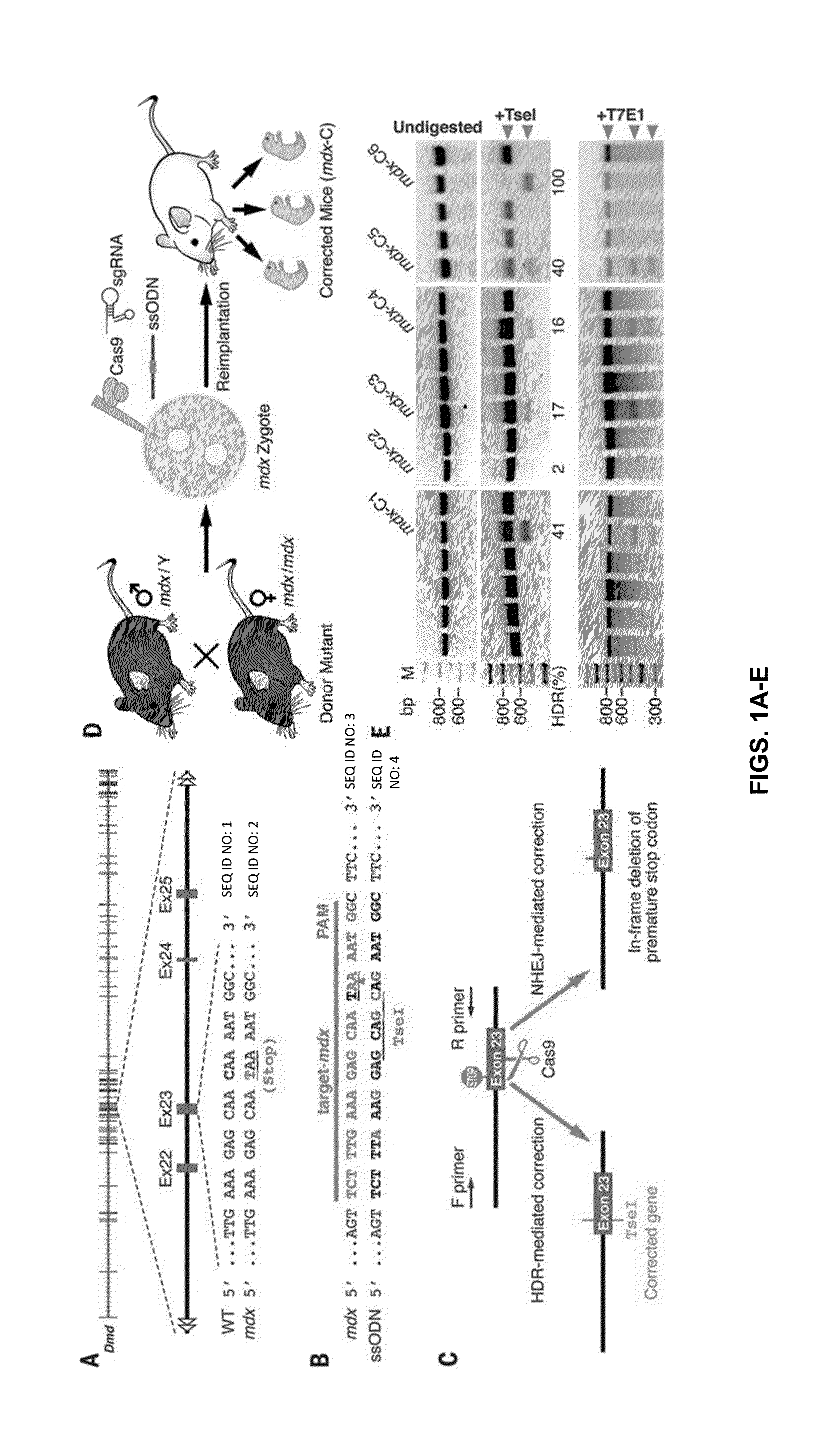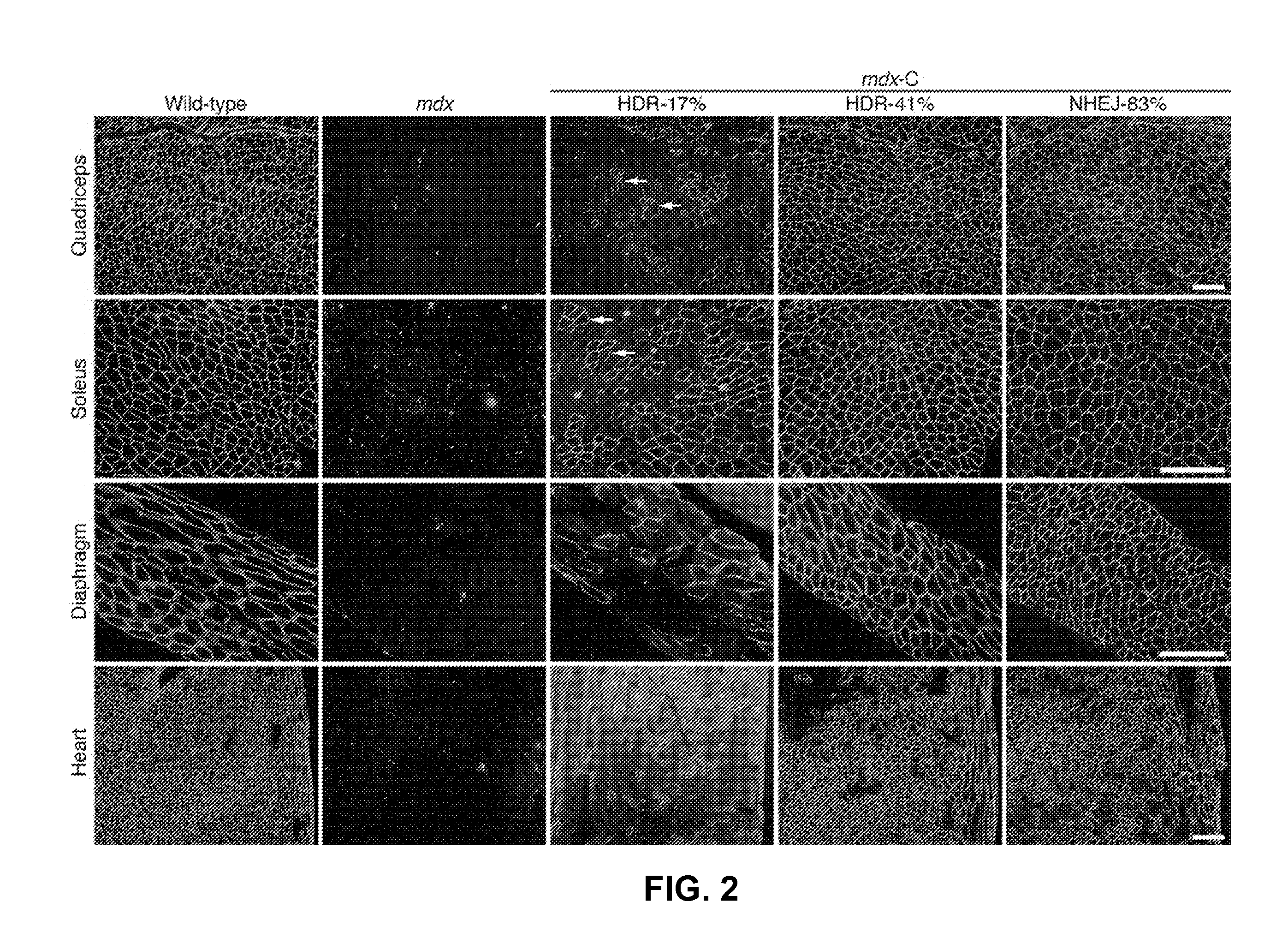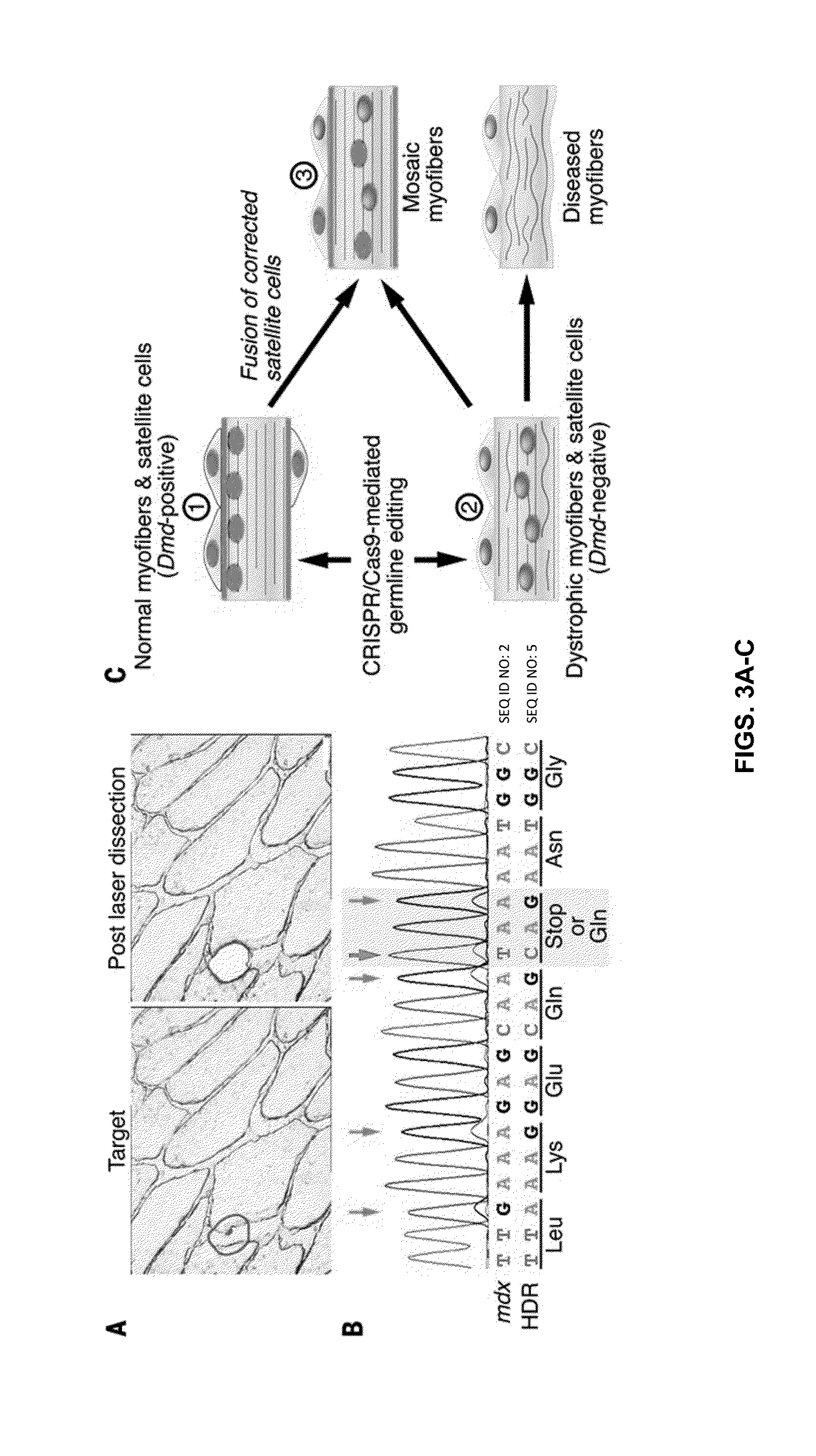Prevention of muscular dystrophy by crispr/cas9-mediated gene editing
a gene editing and gene technology, applied in the field of molecular biology, medicine and genetics, can solve the problems of no curative treatment, many therapeutic challenges,
- Summary
- Abstract
- Description
- Claims
- Application Information
AI Technical Summary
Benefits of technology
Problems solved by technology
Method used
Image
Examples
example 1
Materials and Methods
[0174]Plasmids.
[0175]The hCas9 plasmid (Addgene plasmid 41815) containing the human codon optimized Cas9 gene and the gRNA Cloning Vector plasmid (Addgene plasmid 41824) containing the backbone of sgRNA were purchased from Addgene. Cloning of sgRNA was done according to the Church Lab CRISPR plasmid instructions (world-wide-web at addgene.org / crispr / church / ).
[0176]In Vitro Transcription of Cas9 mRNA and sgRNA.
[0177]T3 promoter sequence was added to the hCas9 coding region by PCR. T3-hCas9 PCR product was gel purified and subcloned into pCRII-TOPO vector (Invitrogen) according to the manufacturer's instructions. Linearized T3-hCas9 plasmid was used as the template for in vitro transcription using the mMESSAGE mMACHINE T3 Transcription Kit (Life Technologies). T7 promoter sequence was added to the sgRNA template by PCR. The gel purified PCR products were used as template for in vitro transcription using the MEGAshortscript T7 Kit (Life Technologies). hCas9 RNA and...
example 2
Results
[0204]The objective of this study was to correct the genetic defect in the Dmd gene of mdx mice by CRISPR / Cas9-mediated genome editing in vivo. The mdx mouse (C57BL / 10ScSn-Dmdmdx / J) contains a nonsense mutation in exon 23 of the Dmd gene (14, 15) (FIG. 1A). The inventors injected Cas9, sgRNA and HDR template into mouse zygotes to correct the disease-causing gene mutation in the germ line (16, 17), a strategy that has the potential to correct the mutation in all cells of the body, including myogenic progenitors. Safety and efficacy of CRISPR / Cas9-based gene therapy was also evaluated.
[0205]Initially, the inventors tested the feasibility and optimized the conditions of CRISPR / Cas9-mediated Dmd gene editing in wild-type mice (C57BL6 / C3H and C57BL / 6). The inventors designed a sgRNA to target Dmd exon 23 (FIG. 4A) and a single-stranded oligodeoxynucleotide (ssODN) as a template for HDR-mediated gene repair (FIG. 4B and Table S1). The wild-type zygotes were co-injected with Cas9 mR...
example 3
Discussion
[0235]These results show that CRISPR / Cas9-mediated genomic editing is capable of correcting the primary genetic lesion responsible for muscular dystrophy (DMD) and preventing development of characteristic features of this disease in mdx mice. Because genome editing in the germline produced genetically corrected animals with a wide range of mosaicism (2 to 100%), the inventors were able to compare the percent genomic correction with the extent of rescue of normal muscle structure and function. The inventors observed that only a subset of corrected cells in vivo is sufficient for complete phenotypic rescue. As schematized in FIG. 3C, histological analysis of partially corrected mdx mice revealed three types of myofibers: 1) Normal dystrophin-positive myofibers; 2) dystrophic dystrophin-negative myofibers; and 3) mosaic dystrophin-positive myofibers containing centralized nuclei, indicative of muscle regeneration. The inventors propose that the latter type of myofiber arises ...
PUM
| Property | Measurement | Unit |
|---|---|---|
| Strength | aaaaa | aaaaa |
| Defects | aaaaa | aaaaa |
Abstract
Description
Claims
Application Information
 Login to View More
Login to View More - R&D
- Intellectual Property
- Life Sciences
- Materials
- Tech Scout
- Unparalleled Data Quality
- Higher Quality Content
- 60% Fewer Hallucinations
Browse by: Latest US Patents, China's latest patents, Technical Efficacy Thesaurus, Application Domain, Technology Topic, Popular Technical Reports.
© 2025 PatSnap. All rights reserved.Legal|Privacy policy|Modern Slavery Act Transparency Statement|Sitemap|About US| Contact US: help@patsnap.com



